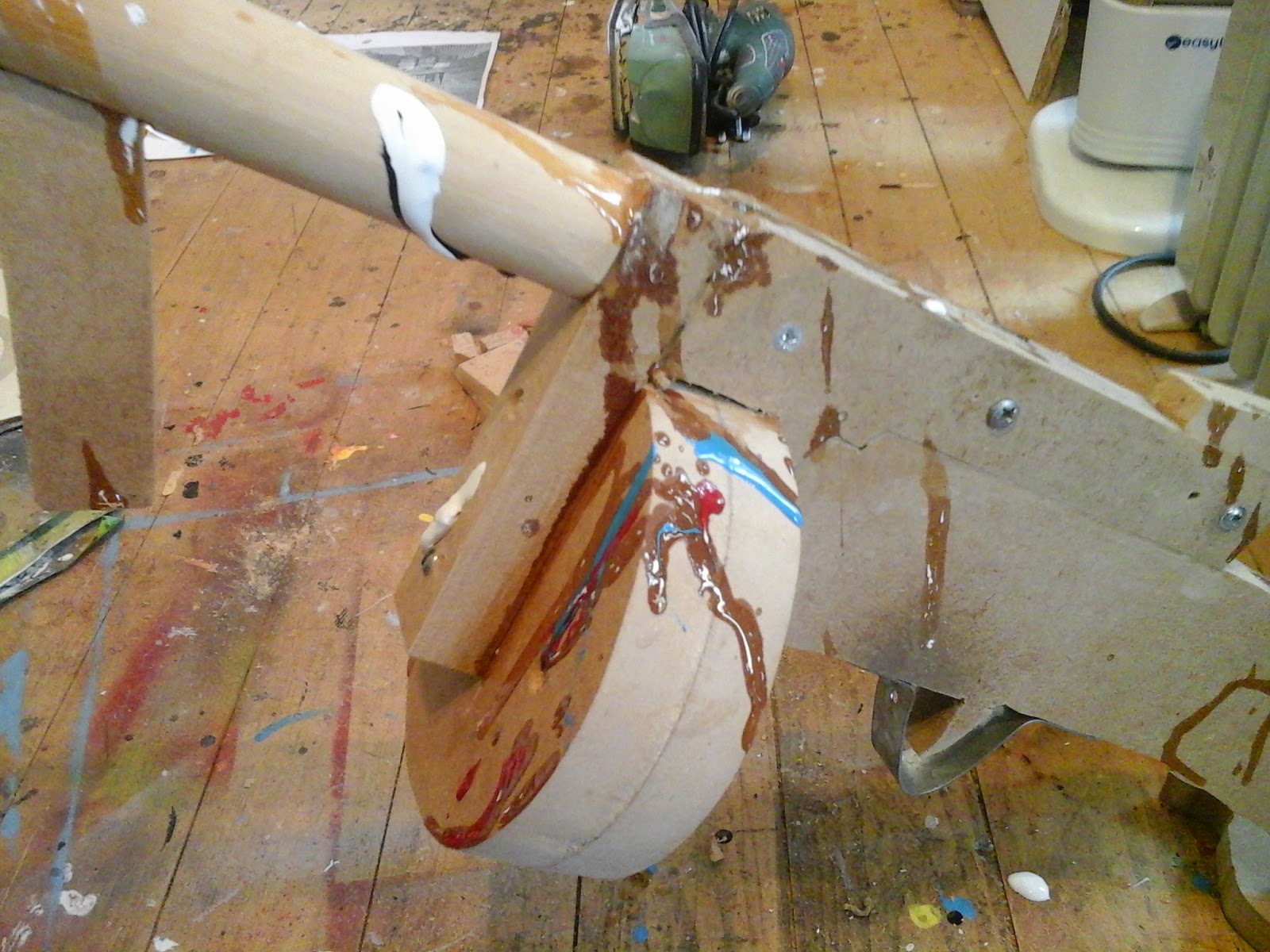"When I was small I
had a crucifix – a cross about six inches long of some dark wood with a figure
cast in some silver metal. I didn’t
think much about it – I certainly didn’t reflect on the hideous act it
depicted. It was just one of the things
I had, like the box of wooden bricks and the furry black cat stuffed with
straw. And just as the cat was about
cuddling something at night and the bricks were about building a castle and
knocking it down, so the crucifix was about praying, with my mother and sister,
that the war would end soon.
So it was an acute
sense of things and the materials they are made from that led to me becoming an
engineer and, later, attempting sculpture.
There are other ways that artists represent ideas – as lines drawn with
a pencil or as paint brushed on a canvas, as music or video or text.
One of the wonderful features of this exhibition, besides the spiritual diversity of the artists, is
the diversity of the media that have been used.
But for me the piece had to be about things and materials because they
are so immediate and so tangible.
The crucifixion is one of the great subjects of art throughout the Christian era. However since Grunewald’s Isenheim altarpiece, painted five hundred years ago, which still makes me cringe every time I look at a picture of it, the image of the crucified figure has become perhaps too familiar. Do you scream when you see it in the window of the SPCK bookshop? Probably not. Muslims refuse to portray the human figure and perhaps they have a point . So what object could I use that would express the physical awfulness of the execution? Screwfix and the builders’ merchants didn’t sell nails of sufficient nastiness, so I found coach bolts and forged them; that means heating them to white hot and hammering them on a big cast-iron anvil. You cannot get an action more physical than that nor, as I soon found, more tiring. I was grateful to Leon Varga, the workshop technician at the College of Art (whose amazing angels’ wing backpacks you see here) who did much of the work and did it better than I could, to make the nails even more sinister.
The crucifixion is one of the great subjects of art throughout the Christian era. However since Grunewald’s Isenheim altarpiece, painted five hundred years ago, which still makes me cringe every time I look at a picture of it, the image of the crucified figure has become perhaps too familiar. Do you scream when you see it in the window of the SPCK bookshop? Probably not. Muslims refuse to portray the human figure and perhaps they have a point . So what object could I use that would express the physical awfulness of the execution? Screwfix and the builders’ merchants didn’t sell nails of sufficient nastiness, so I found coach bolts and forged them; that means heating them to white hot and hammering them on a big cast-iron anvil. You cannot get an action more physical than that nor, as I soon found, more tiring. I was grateful to Leon Varga, the workshop technician at the College of Art (whose amazing angels’ wing backpacks you see here) who did much of the work and did it better than I could, to make the nails even more sinister.
I hope you will
handle the eleventh station. Draw one
of the nails out of its holster or put your foot on the bottom rung of the
ladder. Art shouldn’t be remote or only
aesthetic or intellectual. It should be
a way of helping us see common things, common events, in new ways; ways that
excite or perplex or amaze us. That is
why the eleventh station of the cross doesn’t need a replica Christ made of
resin or wood or bronze; because there are replicas of him all around us and
all we have to do is to open our eyes and see."
































